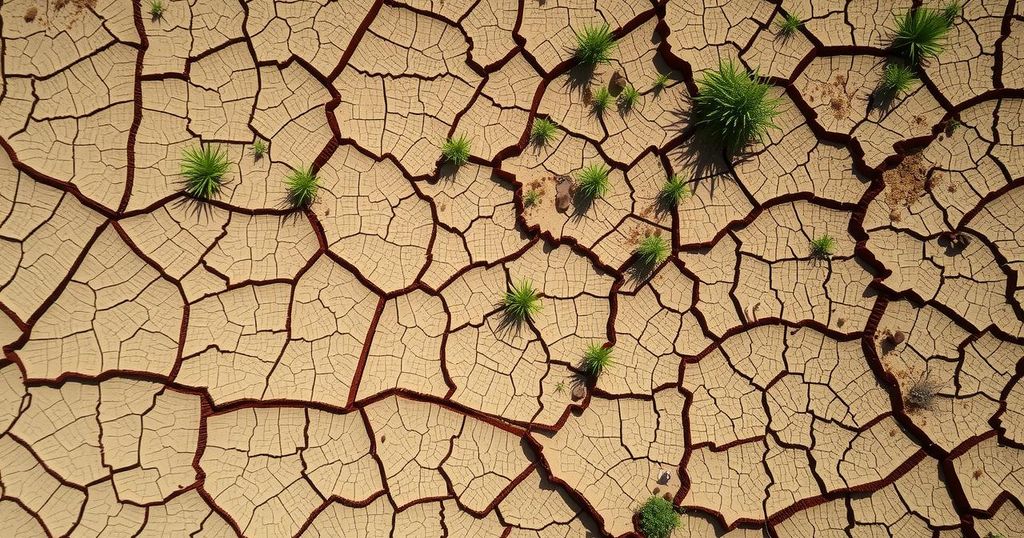The OECD report warns that the Paris region could face economic damages of up to €2.5 billion due to future droughts. Historical temperature increases and growing water demands threaten economic activity, especially in agriculture and manufacturing. Immediate action is necessary to improve water management strategies and infrastructure resilience to mitigate these risks.
The Organisation for Economic Cooperation and Development (OECD) has issued a report indicating that the Paris region may incur economic damages of up to €2.5 billion from potential future drought crises by the century’s end. Although Paris has not yet faced severe water shortages like those experienced in cities such as Barcelona or Cape Town, climate forecasts predict deteriorating conditions after 2050, threatening economic activities, particularly in agriculture and manufacturing.
Historically regarded as water-abundant due to its reservoirs and groundwater, the Île-de-France region has already observed an average temperature increase of 2°C since 1990, elevating the likelihood of severe droughts. The report forecasts potential drought conditions akin to those in Mediterranean regions during the late 20th century within 25 years, resulting in prolonged dry spells and significant agricultural losses.
Sophie Lavaud, the report’s lead author, pointed out the heavy reliance on a network of four major reservoir lakes to supply substantial river flow during droughts. While these reservoirs have historically sufficed, complacency regarding future risks could prove detrimental, as rainfall patterns become more unpredictable and soil moisture decreases due to climate change.
The Île-de-France region, home to 19 percent of France’s population and accounting for a third of the nation’s economy, has seen a remarkable increase in water demands, especially in agricultural sectors. The report states that agricultural water needs have more than doubled since 2012, with projections indicating a 45 percent increase by 2050. Currently, 57 percent of water withdrawals serve public supply, while other sectors utilize the remainder.
A severe drought event, comparable to the catastrophic 1921 drought, could necessitate stringent water usage restrictions across industries and agriculture for over 150 days to ensure sufficient drinking water supplies for residents. The OECD’s analysis reveals that immediate economic losses, stemming from reduced industrial production and lower crop yields, could represent over two-thirds of the total projected cost, with manufacturing and farming sectors being the most impacted.
The report emphasizes the critical importance of understanding water usage patterns and recommends implementing preventive strategies to mitigate drought risks. Suggestions include conducting risk assessments of drought impacts and reallocating water resources. Current policies permit unlimited withdrawals for users outside drought periods, contingent upon proving minimal environmental impact.
Additionally, the study warns of the structural threats drought poses to Paris’s infrastructure. The contraction of clay soils during prolonged dry spells may lead to significant structural damage, potentially exacerbating economic losses. The OECD calls for a broad re-evaluation of water infrastructure, advocating measures such as rainwater harvesting and industrial wastewater recycling to enhance resilience against future droughts, highlighting the necessity for immediate investment to prepare for these inevitable challenges.
In conclusion, the OECD report underscores the imminent threat posed by future droughts to the Paris region, projecting significant economic costs and structural risks. Immediate preventative measures and a strategic reevaluation of water management practices are essential to address escalating water demands and safeguard the region’s economic stability against impending climate challenges.
Original Source: www.rfi.fr




